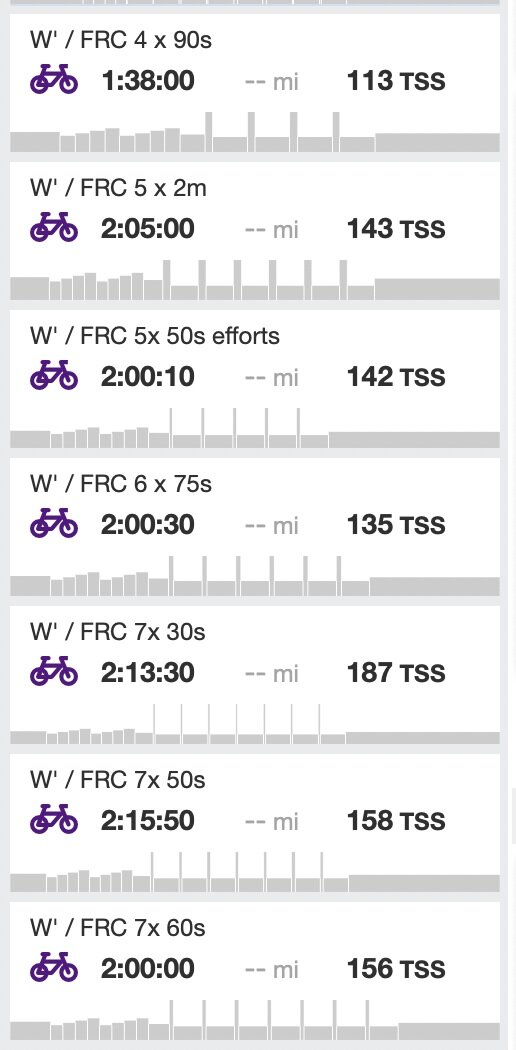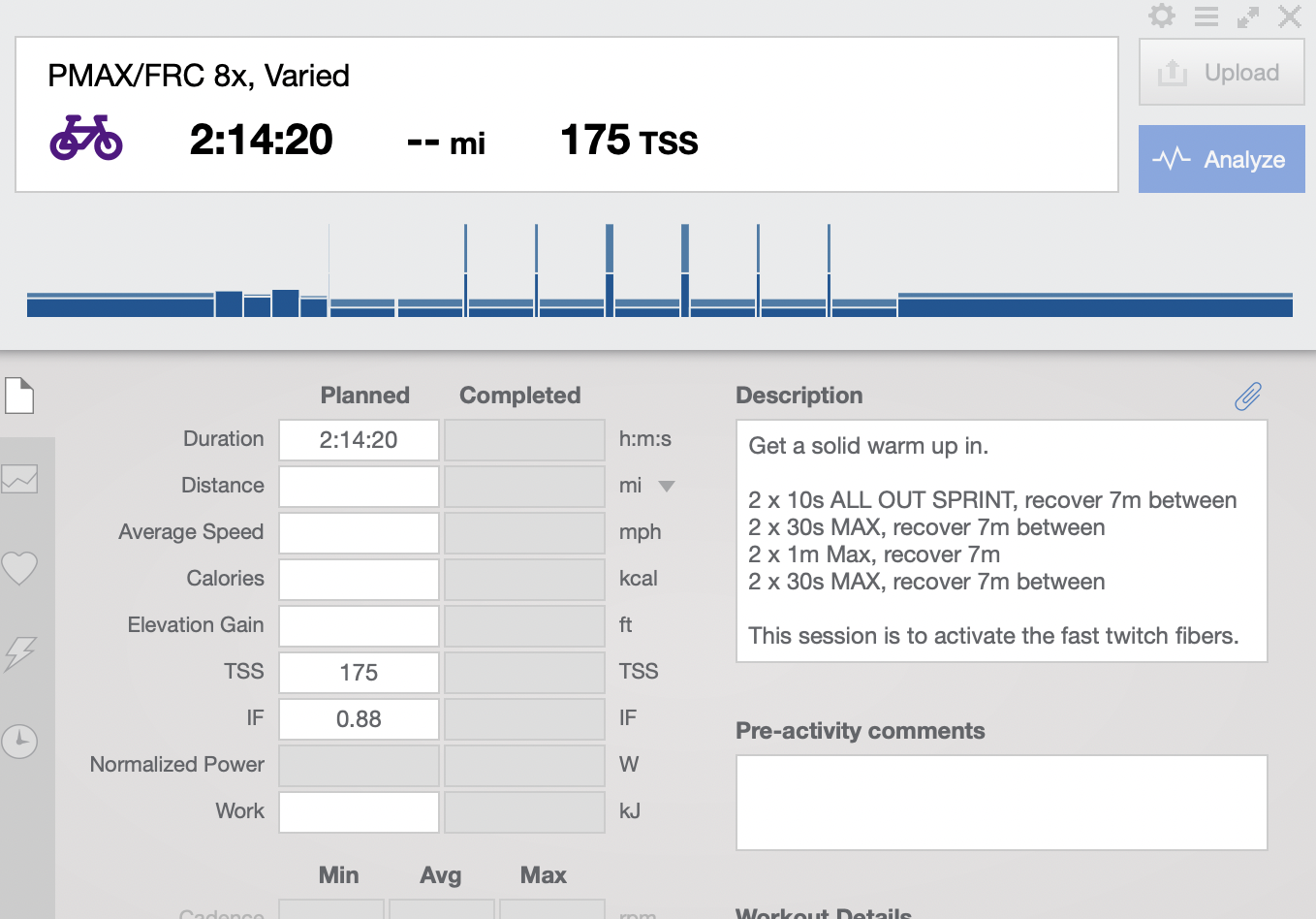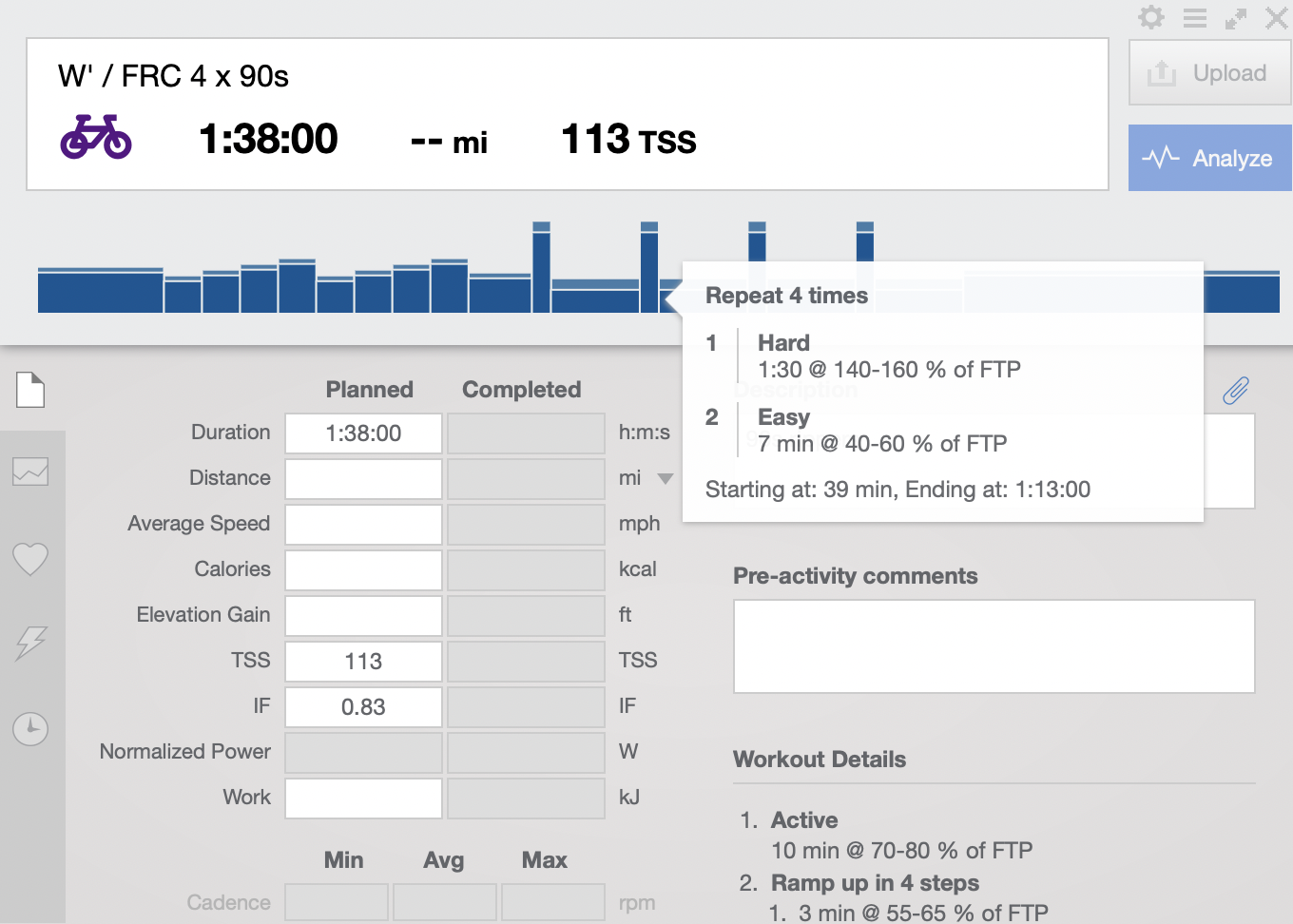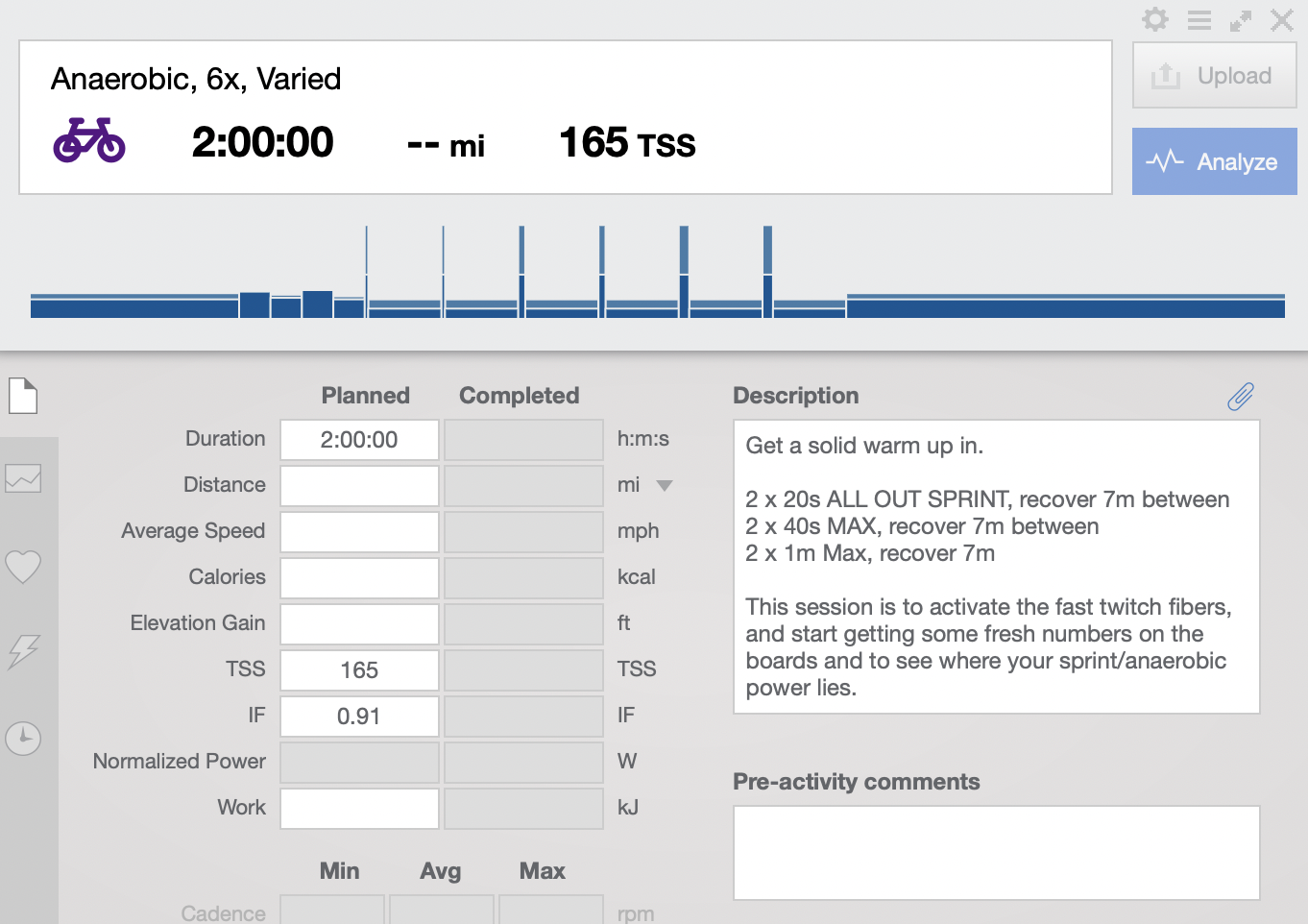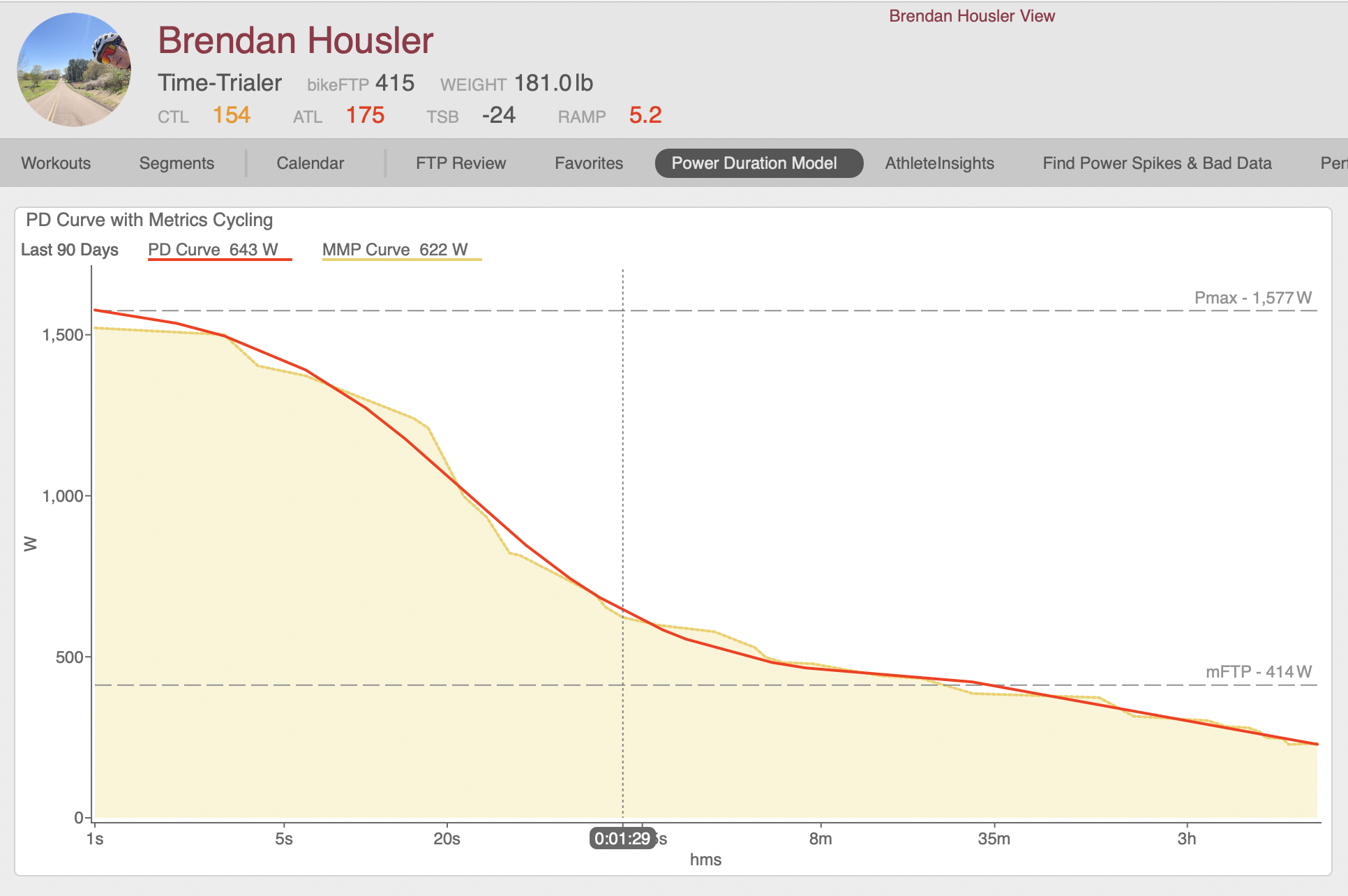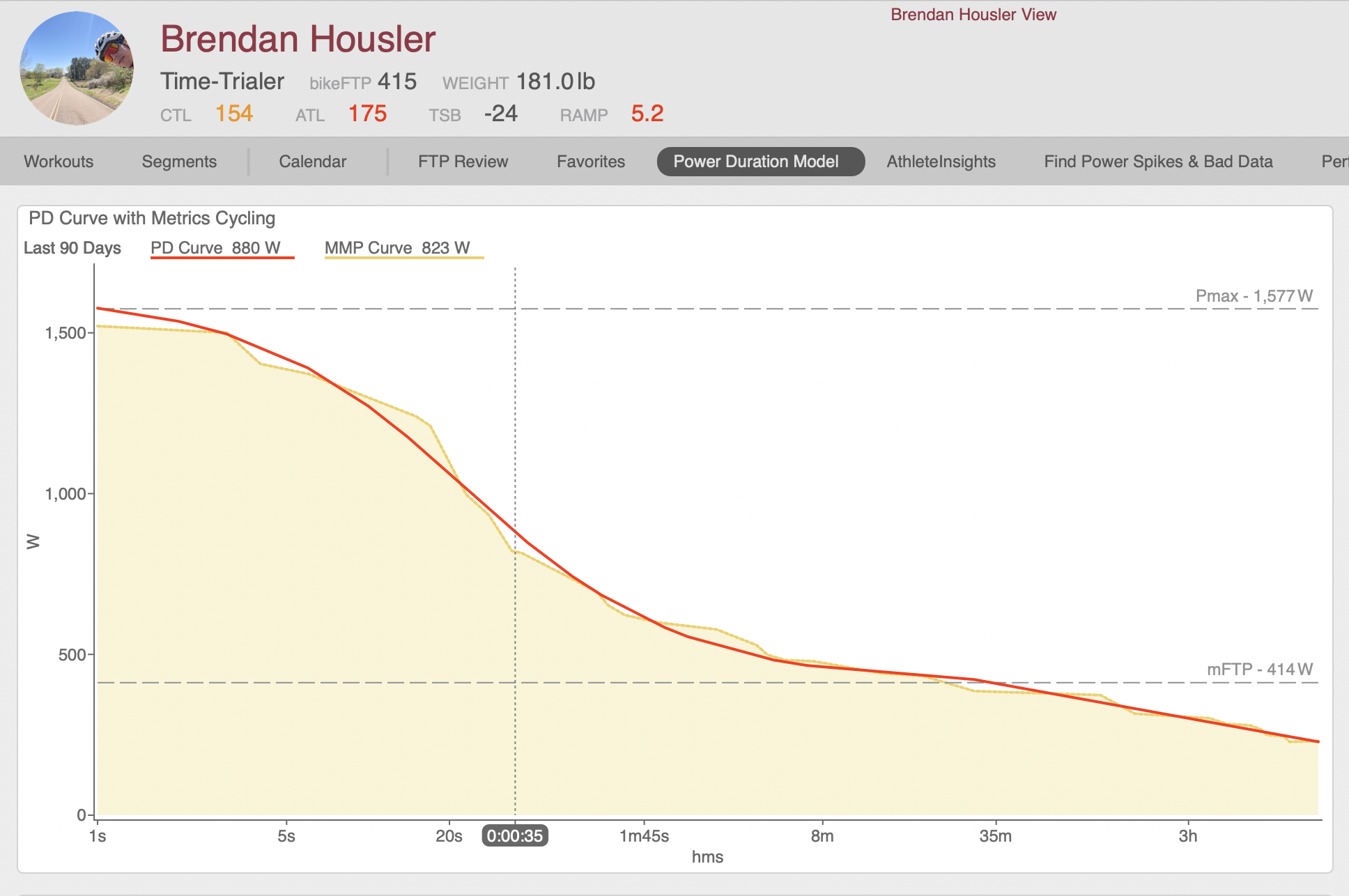Anaerobic Capacity For Cycling: What is It? How To Increase Yours
Anaerobic Capacity
↓ Anaerobic Endurance Cycling
↓ What is Anaerobic Capacity?
↓ Anaerobic Power And Glycolysis
↓ What is Anaerobic Capacity in Cycling?
↓ Hydrogen Ions, The Burn We Feel
↓ Is Anaerobic Fitness Require In Cycling?
↓ How Long Can You Sustain Anaerobic Cycling?
↓ How To Increase Anaerobic Capacity
↓ Anaerobic Capacity Intervals For Cycling
↓ When To Train Anaerobic Capacity
↓ Fine Tuning Anaerobic Power Before Races
↓ Anaerobic Training Can Lower Your FTP
↓ Should We Lean on the Metrics? VLamax and FRC
↓ Do You Need To Train Anaerobic Capacity?
↓ Conclusion
Anaerobic Endurance Cycling
This blog post will be all about anaerobic capacity in cycling. It will explain exactly what it is, why a cyclist would want to know about it, how to improve it, and much more. While many know that cycling is mostly an aerobic sport, some have wondered when cycling becomes anaerobic. Can cycling be anaerobic? Of course!
I want to focus on the points that have the biggest effect on your training and racing.
Some blogs go deeper than many cyclists care to know about, and I don't see the need to write an article similar to the 40 others out there. Therefore, you will also see a “Quick Summary” before some key sections.
If you decide that you want to easily incorporate this training into your TrainingPeaks calendar, check out this 8 Week Anaerobic Training Plan.
See Also: The Science of Cycling: Understand Exercise Physiology and Get Faster
What is Anaerobic Capacity?
Quick Summary on What is Anaerobic Capacity
Anaerobic capacity is your ability to create energy without oxygen using the glycolytic system. It uses pure carbohydrate metabolism and produces lactate as a byproduct (the burn you feel at the end of a hard effort).
What’s an anaerobic capacity example? When you think of extremely hard and short efforts in cycling training or racing, that is most likely when you create power anaerobically. Anaerobic power is created without oxygen, and the bursts are very powerful but short.
To be noted, cycling is mainly an aerobic sport, and even short efforts around a minute have some aerobic portion to them.
To clarify, the creatine phosphate system produces our highest powers, but this article will not focus on that system or the training involved. For this article, we will refer to anaerobic training in terms of 20-90 seconds in duration.
It can be a little longer to 2-3 minutes, but this also depends on how fresh the athlete is. If you are fresh and smash a 2.5-minute interval, you may have more anaerobic contributions than if you are tired.
Even a 1 minute effort can be a bit long in terms of anaerobic power on certain days, but I’d like to include it for now, mainly because there are some good 1 minute workouts that I’ll include.
See Also: Criterium Training
Anaerobic Power And Glycolysis
Quick Summary of the Definiteion of Anaerobic Capacity
Anaerobic power utilizes carbohydrates, and the breakdown of this fuel (via a process called glycolysis) creates the burning sensation in our legs from Hydrogen ions.
When you’re cranking out your 30-second effort at 900W when cycling with a power meter, you are producing that energy through a process called glycolysis. Hence the term, glycolytic system.
The glycolytic system uses carbohydrates to produce energy. The carbohydrates break down, and the end products that are most important to this article are energy and hydrogen ions.
We talked about anaerobic power being in the ballpark of 30 seconds to 2-3 minutes in duration, but this does not mean that it turns off after 2 minutes. Even on a 30-minute effort, there is some anaerobic contribution. This is why on a 20m test, you only take 95% of your watts to help account for anaerobic power.
What is Anaerobic Capacity in Cycling?
Quick Summary
Anaerobic power is the power created above FTP
It is a finite amount
There are metabolic byproducts from this creation of energy that create burn (hydrogen ions are the biggest culprit)
Anaerobic capacity is the amount of work that can be put out by a cyclist anaerobically. How much work can be done well over FTP?
If you are using WKO5, this is called Functional Reserve Capacity, and this anaerobic capacity calculation is expressed in kilojoules.
If you use Golden Cheetah, it is called W’ (watt prime), and here’s a nice explanation from their website:
In 1965, two scientists, Monod and Scherrer, proposed an ‘energy store’ (later termed W’) that represented a finite amount of work that could be done above that Critical Power.
In cycling parlance W’ would be referred to as the matchbook– the harder you go, the quicker it will be used up, but temper your efforts, and you can ‘save a match’ for the last sprint.
See Also: Complete Polarized Training Guide
Hydrogen Ions, The Burn We Feel
Quick Summary
Lactate is not the burn that we feel. It is the hydrogen ions. Lactate is used again as fuel in many cases.
To reduce the burn, we have to go easier. When you can no longer pedal above FTP, you have used up all (or most) of your anaerobic capacity.
You can reduce the burn with products that stop the hydrogen from getting into your blood. It’s called LactiGo.
When you undergo glycolysis (by creating energy without oxygen), a Hydrogen ion is a byproduct, which is the burning sensation that we feel.
If you want to reduce that burn, as crazy as it sounds, it’s as easy as putting on topical carnosine or LactiGo. This product absolutely destroys AMP or other sodium bicarbonate products, but put it to the test yourself (it’s guaranteed).
Is Anaerobic Fitness Require In Cycling?
Yes! Here’s a Quick Summary:
All cycling includes hard surges at some point; either hit the high watts and sustain them, or get dropped. But, more anaerobic capacity is not always better, and we’ll discuss this later.
When we say “high watts”, think of Hill climbs, responding to attacks in a road race, accelerations out of corners in crits, cyclocross racing, etc. Accelerations and quick bursts need instant energy, and the aerobic system cannot meet all of these needs and you must spend time building anaerobic capacity.
This is when the carbohydrates are immediately broken down and used for fuel. We also have energy stored within our muscles (glycogen) and this is used for these short hard efforts.
An anaerobic power for cycling that can create enough energy for this brief, powerful, and often repeated surges is the difference between staying in the race or getting dropped.
This is the biggest reason anaerobic capacity is important; you need to go hard (enough) and not get dropped! That said, more anaerobic capacity training is not always better, and we’ll get to that!
What are Anaerobic Zone Ranges For cycling?
If you look at the Classic Zones, anaerobic training is anything above 120%. These are rough borders, so you could say 120-150% FTP.
Now, this isn’t a line drawn in the sand. As we discussed earlier, there are still aerobic contributions to a 60-second effort, and we will always want to produce energy aerobically whenever possible.
If you use WKO5, the anaerobic zone will be a portion of the zone marked FTP/FRC and then FRC.
When in doubt, if you are going super hard and know it’s an effort that cannot be sustained for a very long time, you are most likely going anaerobic!
How Long Can You Sustain Anaerobic Cycling?
It depends on the athlete (what is their anaerobic capacity), how fresh you are, and mentally how deep can you go?
It depends on when you are bringing this anaerobic demand on your body in the race or training ride. But for all intents and purposes, 20-90 seconds, and maybe out past 2 minutes if you are fresh.
How To Increase Anaerobic Capacity
Quick Summary on How To Increase Anaerobic Capacity
You can improve anaerobic capacity by training with maximal anaerobic efforts (15-40 seconds), but you can also increase anaerobic capacity with longer 60-90 second efforts.
Take plenty of rest in between efforts to allow your anaerobic capacity to regenerate, a minimum of three minutes rest. This will allow you to achieve maximal power on every effort to increase anaerobic capacity.
To learn more about anaerobic intervals, make sure to check out our anaerobic bike workouts blog.
Let’s make sure we think about this one first, as there are two dimensions to consider when we talk about anaerobic capacity cycling workouts.
The two dimensions are your maximal anaerobic power (a super hard, one-off sprint) and anaerobic power over a longer duration (those longer, gut-punching drags).
The easy answer to the question of how to improve anaerobic capacity is through training. Obviously. We’ll get into specific sessions below, but think of it this way:
To improve anaerobic capacity, you’ll be looking to hit the highest average watts possible over 30 seconds (or a range in 15-40s). These are your 900W sprints for 30 seconds.
Those are important, but what about those lower power level surges that happen over and over?
For anaerobic power over longer durations (not maximal anaerobic power), these might be the 500W surges for 90 seconds. You also want to hit these, so you’d be training above VO2Max power, but it is not an all-out sprint; there is some pacing involved in these ones.
See Also: Mountain Bike Training Program
Anaerobic Capacity Intervals For Cycling
What are some examples of anaerobic capacity workouts?
Anaerobic capacity workouts should stick to 30-90 seconds. Once you start getting closer to 2 minutes, you’re going to be going more aerobic. Now, if you were fresh and cranked out a 2-minute max effort, you’d theoretically use more anaerobic power than if you were attempting this multiple times.
As discussed above, some workouts can focus on the maximal power with a lot of recovery between each interval; about 5-8 minutes.
When you want to work on your anaerobic endurance, you won’t be hitting max watts but slightly lower wattages for longer durations, with shorter rest (only 1-3 minutes).
I don’t prescribe the repeated ones as much because you will get those efforts in races or group rides when it’s FULL GAS with lots of attacks.
Also, it’s more important to develop the pure power first. If you go to work on anaerobic endurance, but have a low anaerobic capacity, you won’t be going hard enough to get the training benefit, so work on the maximal power first, then shorten the rest periods to learn how to improve anaerobic endurance.
Since everyone produces different amounts of anaerobic power, do these by feel first to get a sense of where you are.
Try these on hills, as you’ll be able to squeeze out some more watts.
Total time in the anaerobic zone could be as low as 3 minutes (5 x 45s with full recovery), and as high as 10 minutes (2 sets of 5 x 1 minute).
There are some workouts that I have seen accumulate more time, but I don’t think the return is a more significant benefit than the cost of really going that deep. As they progress, the watts fall, and you aren’t training anaerobically as much. Once the session drags on for too long, we tend to put out fewer watts and depend more on the aerobic system, which is not the main point of that session.
Here are some example workouts that I like to give out, but really I base them more off of an athlete’s PD Curve; what durations within that area are they lacking in?
I would give myself 35s and 90s efforts to go after, based on the information below.
There used to be some crazy workouts that are even listed in Training and Racing with a Power Meter, that has 8 x 2m @ 130%, followed by 3 x 1m @ 140%, and different configurations where you’re reaching nearly 20 minutes in the zone (or hoping so). I truly think this is way too much for a couple of reasons: if you can complete that, you are so anaerobic already! You don’t need to increase anaerobic capacity much more!
Also, if you try and are not that anaerobic, you won’t be training the glycolytic system. You’ll be feeding a good amount of energy aerobically, which isn’t the point of that training session.
Make it hard, REALLY hard, get the stimulus in, and finish with endurance riding. If you feel like you’re about to die and keep pushing a bit more, you’re doing it right. You need to be mentally and physically ready to CRUSH it on these days.
We also have a guide with neuromuscular workouts that provides additional resources on training anaerobic power.
Also, as we’ll discuss below, you need to be careful training anaerobically too much, as this could be detrimental to your FTP.
When To Train Anaerobic Capacity
If an athlete has a very limited anaerobic capacity, whether indicated by a metric like FRC in WKO5 or W’ in Golden Cheetah or Intervals.ICU, or even just their subjective feedback from training and racing, then they may need some anaerobic capacity training.
Are you getting dropped from the surges, or feel like there’s a lack of overdrive when you’re rested enough? If so, you might need some anaerobic training.
This would be a big limiter if you’re doing hill climbs or criteriums, but even some road races as well.
You could start training this in the offseason, even though it’s technically a base period, because it will take some time to build up (as opposed to just tuning up before races if you are a more naturally anaerobic rider). Also, it will be very fatiguing, so you’ll want to figure out the dosing: how many sessions can help you, and how many start making you too exhausted.
Once you develop the punch needed, maintain it every other week with specfic training, but don’t go so overboard that you’re completely shifting your physiology towards becoming a more anaerobic power producing athlete.
Remember, you might top out and not realize it; and then when you continue to try increasing anaerobic capacity, you could be driving yourself into the ground. It really helps to have a second pair of outside eyes here. No, this isn’t a plug for a coach, but even get a friend to overlook WKO or your riding. Or, subjectively, are you no longer getting dropped from the surges?
The anaerobic training cannot improve indefinitely; it’s actually probably more limited than what we can train aerobically (however this training takes longer to develop!). If only we could all rapidly increase our anaerobic and aerobic power in only 6 months time!
Fine Tuning Anaerobic Power Before Races
Depending on your training age and how often you've done them, I would start these 4-6 weeks before your big events.
If you’re newer and are unsure how you will respond, start a bit sooner so that you can provide adequate recovery between the sessions.
If you’re not too sure about intervals in general, including aerobic-based intervals, check out this Complete Guide To Cycling Intervals.
If you’re more trained in anaerobic capacity intervals, you probably know how fast the responses will take place and may only need this race tuning a few weeks before competitions start.
I don’t prescribe a ton of anaerobic training because:
It is Extremely fatiguing
Can decrease your FTP
You don’t need too many sessions to see gains (3-4 high-quality ones do wonders)
Anaerobic Training Can Lower Your FTP
Big hat tip to my coach Tom Bell who made me start thinking of anaerobic training in a different light.
I have always considered myself to be a VERY aerobic-based athlete in terms of my training. I ride a lot of endurance and use VO2Max and FTP intervals in my build phase, with a lot of maintenance riding between events.
Simply said, aerobic miles and training are the mainstays of my training all year round.
That said, Tom asked me to reduce the number of interval sessions that I would normally do as the season started. We focused on one solid session plus a race, and that was it per week.
I was very hesitant about this approach, but he explained it this way: more anaerobic power is not always better.
How is that so?
Since cycling is mainly an aerobic sport, we want to produce as much power as we can aerobically but make sure we have enough anaerobic power for our events.
Said differently, you almost need to ask yourself a fundamental question: do I have enough sprint power to win? Can I handle the surges in races?
If yes, you might want to stay away from anaerobic capacity training. The reason being is because when you train yourself to produce power anaerobically, you are preparing the body to create power through glycolysis. As you recall, it uses our limited carbohydrate stores, and one of the byproducts is that nasty hydrogen ion.
This hydrogen ion creates the burn that we feel, so if you become a more anaerobically power-producing athlete, you will feel the burn earlier than if you were creating the power aerobically.
Also, when you produce power anaerobically, pyruvate needs to be consumed with oxygen through the aerobic system, but if not, it creates lactic acid and the hydrogen ion. This creation of lactic acid at lower power levels affects your FTP.
FTP is a balance of how much lactate you create and how much you can consume. When the creation side of the equation outweighs the clearance capacity, you start to feel the watts dropping.
Therefore, when you become more anaerobic and create more lactic acid at lower power levels than if you were a more aerobic athlete, you can essentially lower your FTP.
Yes, aerobic capacity and glycolytic rate can both increase at the same time, and if the former is developed more than the latter, your FTP should increase as well. That might be hard to gauge though if you are simultaneously trying to work both, not to mention, that will be extremely fatiguing!
All that said, you need to step away from the computer algorithms that tell you what your anaerobic power is and ask this:
Do I have ENOUGH anaerobic power to win my race?
Will adding more power, but possibly lowering my FTP, be more beneficial or detrimental to my success?
Then, after answering those questions, look at your training. Are you going too hard, too often?
This is why I have been a HUGE proponent of aerobic training since I started coaching athletes in 2010! Make sure that you are laying down a huge foundation first!
Should We Lean on the Metrics? VLamax and FRC
You all know I love the metrics and love training with power, but just like every other metric, VLamax, FRC, and W’ are all just individual metrics.
Honestly, sometimes your perception of your performance ability might be even more accurate. There is still a lack of accuracy with the metrics mentioned above, even if you measure directly with lactate measurements, let alone when things are modeled or estimated like in WKO5 or INSCYD.
Now I’m not knocking any software or training applications that use these metrics, but I want you to be careful of overusing them and giving them too much weight.
Have you ever had a ride that sent your FRC through the roof and pushed your FTP down, especially if your best 20-minute effort or so almost fell off the 90-day window?
So are you now magically more of a puncher? Of course not. However, it can only understand you based on the data that you send into the algorithm.
So how should we approach these metrics? Look at your FTP and FRC over a few different periods. You should be able to see the balance of the two moving around depending on what type of focused training you’ve undergone. And then simply ask yourself: “Can I put out sufficient power in short bursts and respond quickly to attacks or sudden pace changes?”
“Am I improving in areas that will positively affect my race performance?”
What we are being marketed to is that if we hone in on training around one metric, like VLamax, we have more of a chance of being like Mathieu van der Poel: huge FTP, huge FRC, and can sprint too!
Some companies will decide to highlight the 3 best riders in the world and say "Look how they use VLaMax to go from winning a long road race to a CX race". Come on, really?
It’s not the focus of one secret metric, but simply the fact that these athletes are so strong and able to do that! Some athletes will be blessed with a large anaerobic capacity, as well as an extremely efficient aerobic system, giving them a massive FTP!
Do You Need To Train Anaerobic Capacity?
Give yourself the assessment above, and really see if improving your anaerobic power is more beneficial, or if building a bigger engine and FTP is more beneficial.
If your anaerobic power goes up at a greater rate than your VO2Max, technically your FTP will decrease. This is most likely bad.
If you have some dips in your power curve, it could be you have not done a maximal effort of that duration in a while, rather than anaerobic weakness. You can perform an anaerobic capacity cycling test of any duration to determine your proficiency. This can also help you determine if you need to train it or not.
Both anaerobic power and VO2Max can increase, but we need the latter to increase more. There are other aspects to this such as buffering capacity, muscle fiber type distribution, lactate shuttling ability, etc, and these all also play a factor!
Conclusion
At the end of the day, you’re most likely going to find bigger performance gains by focusing on your aerobic development.
Focus your training on what takes a while to come around: the aerobic system.
Then, right before the big races that you have planned, get keyed up with a few, but extremely focused anaerobic sessions.
If you’re training for a race series or just upgrading for points, this can become more difficult, as you’re not truly trying to “peak” for one big race.
That said, I’d roll into the series in shape to race and get some early W’s and confidence, but allow your body to absorb those races as a training stimulus as well.
You’ll most likely still get faster as the series progresses, and therefore stay a step ahead of the competition.
If you’re going after just a few big races in the year (Nationals, etc), it becomes even easier as you can roll your build phase right up until the big competitions start, get keyed up, and crush it!
Good luck out there!
If you’re curious if our training ideas work, check out our testimonials.
If you need help with your cycling training plan, email us and we can get help get you started on the first steps.


